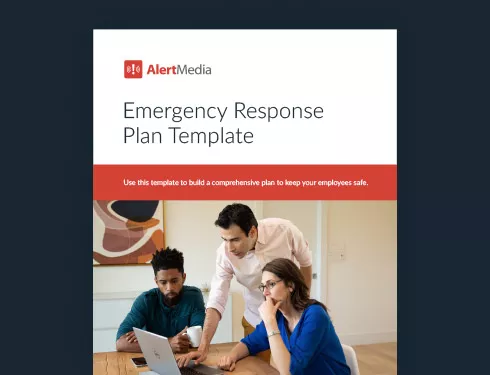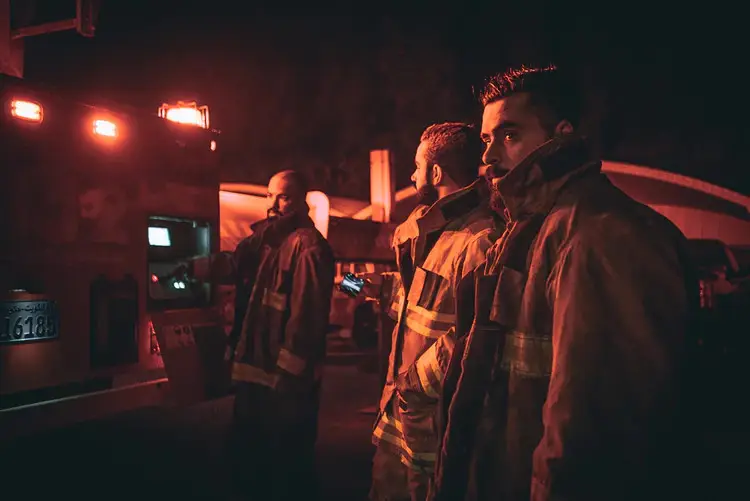
Actionable Advice: 5 Practical Preparedness Tips From Safety Experts
Emergency preparedness has taken center stage during the last year in the face of an increasing volume of threats. Here are some of the best preparedness tips, tools, and tactics used by 5 leading safety professionals in 2021.

Every week on The Employee Safety Podcast, we talk to top safety professionals from businesses large and small who spend every day keeping their employees safe and their businesses running during emergencies.
As we close out 2021, a year that pushed emergency preparedness to its limits again, we scoured through 12 months of podcast episodes to find some of the best advice given by our guests. Whether you are still trying to get through the last few weeks of 2021 or have already finalized your emergency planning for 2022, you’ll feel much more ready for the new year with this preparedness advice in your toolbelt.
Preparedness Advice From 5 Safety Professionals
Penny Neferis on JetBlue’s strategy for effective crisis planning
Penny Neferis, Director of Business Continuity, Disaster Recovery & Emergency Response at JetBlue Airways, shares the importance of response plan testing and continual improvement.
We conduct quarterly tabletops with surprise scenarios for our crisis management team. We also perform company-wide exercises … We are constantly promoting preparedness and finding ways to engage our teams. Crisis preparedness is part of our DNA. You can’t let your emergency plans sit and collect dust. Having an active program is essential to keeping employees safe.
Developing strong relationships early on will [also] really help you, whether that’s engaging local, state, or federal agencies—FEMA, the NTSB, the FAA—or getting together with others in your industry and sharing best practices. We used to be able to go to conferences, meet folks, and learn from each other. [While that’s not possible right now,] we can still rely on relationships that were developed in the past and ask other industry leaders how they’re addressing challenges. There’s no competition when it comes to a crisis; we’re all in it together.
Make sure you engrain emergency preparedness into the culture of your business. When your teams always have safety on their mind, you’ll be ready to face any crisis that comes your way. And when you create good partnerships with local, state, or federal agencies, as well as other safety professionals, you become a part of the larger safety community. Together, we can handle the coming challenges of 2022.
Josh Anderson & Stacey Gavrell on solving for safety challenges in at-risk environments
Josh Anderson, Manager of Safety, Security, and Emergency Management, and Stacey Gavrell, Chief Community Relations Officer—two safety leaders from Valley View Hospital—discuss how they manage patient and employee safety in this at-risk environment prone to mudslides, wildfire, and winter weather.
Regarding emergency management, it doesn’t matter if you’re in healthcare, the private or federal industry, or just someone at home—you need to conduct a hazard vulnerability assessment. There are basic templates online you can use, and this assessment will tell you what you’re doing well and what you can improve … Take two of those hazards and invest in equipment and training for your personnel or yourself related to those hazards. Then, exercise those two hazards that calendar year. Once you feel that you’ve increased your response and recovery capabilities regarding those hazards, do it all over again. Be sure to focus on man-made and technological hazards, as well as natural disasters. Finally, always continue to assess what your vulnerabilities are.
We perform an after-action improvement plan set forth by Homeland Security where we look at our objectives, whether or not we reached them effectively, and if there are areas for improvement. Once we identify areas for improvement, we create action plans, decide who will be responsible for them, and set a target date. There’s follow-through to ensure that—when a fire or mudslide happens again—we have those weak points taken care of.
You can take any after action report, and nine times out of ten, a lack of communication will be on there [as an underlying issue]. Communication is critical because it saves time, allows us to make the correct decisions, and prevents us from backpedaling. With the tools we have in place now, communication is showing up less and less in our after-action reports.
When you run drills for your emergency responses, the best way to make sure you are constantly improving your response is to create reports. Specifically, identify what went wrong in the drill and fix it for the real emergency, and you’ll be far more prepared for a successful response.
JoAnn Dankert on emergency preparedness tips from the National Safety Council
JoAnn Dankert, Senior Safety Consultant at the National Safety Council, shares safety tips and guidance from the NSC.
The idea behind [a] drill is not just [so people are ready [for an emergency] but to also uncover any sort of gaps or glitches that an organization might have and then that gives you the chance to put corrective actions in place … in a safe environment and at the pace you would like to.
Have an understanding of what types of hazards might be on that job site or in that facility because the needs for a manufacturing facility would be different from retail, for example. The idea here is for us to look at making sure that those basic things are covered. If you have a medical emergency, what would you do? If there’s a fire, how would you alert people to that? If you’ve got chemicals on-site, what materials do you have for a chemical spill clean-up? And how are your employees trained? And what personal protective equipment do you have? So what we’re trying to do is gauge if the plan is right-sized and doesn’t overcomplicate things. In most urban settings, we can call 911 to get professionals to help us on-site, but employers should be able to mitigate risks until emergency responders can assess the situation.
Employers get overwhelmed with preparing for the multitude of potential emergencies that can take place at their facility or on their job site … It’s a great idea to make friends with your neighbor to understand their hazards, how they might cause problems for you, and vice versa.
Getting to know what specific hazards your business faces is key to creating an applicable response. While it’s easy to get overwhelmed, creating specific response scenarios for each type of risk will be the best way to keep your employees safe.
Gianetta Jones on how Coca-Cola UNITED navigates post-hurricane recovery
Gianetta Jones, Vice President & Chief People Officer at Coca-Cola Bottling, shares how the company overcame Hurricane Michael and why communication was key to doing so.
We felt like we were prepared because we have extensive hurricane preparedness plans across all of our coastal locations. If you think about a natural disaster, the Red Cross typically arrives first, but Coca-Cola UNITED is right behind them, distributing water to impacted areas.
We were thrown a curveball with Hurricane Michael, however, because we did not prepare for the telephone infrastructure to be severely damaged. We had to pivot and purchase satellite phones for our operators to be able to communicate.
Make sure all of your associates know what to do in an emergency, especially if they live in a tropical area. Do you have water on hand? What’s your emergency evacuation plan? Who do you need to contact? What about your pets? Get people thinking about these questions ahead of time and make sure that your HR teams are connecting with local leaders. When hurricane season begins, remind everybody of the tools at their disposal. If you already have AlertMedia, refresh your team on how to navigate, how to respond, and what to watch for.
Also, be ready to pull from areas that have not been impacted by the storm to see if you can logistically bring in food, clothing, and anything else people may need. You have to observe what’s happening at the moment, almost like a quarterback on the field, and instantly be able to communicate changes, which can be very hard to do without automation.
During a disaster, critical infrastructure may fail, so make sure you build a communication plan that can adapt. Having an automated notification system means that you can focus on managing any changes or disruptions, and not on worrying about communicating with your team.
John Brooker on how L3Harris cultivates preparedness during organizational change
John Brooker, Director of Crisis Management for Space and Airborne Systems at L3Harris, describes how his team consolidated existing plans to develop a cohesive, standardized crisis management program for all locations.
We created an active threat response template and distributed it to all of our sites that allow them to focus on and respond effectively to that event. In the last year and a half, we created and disseminated a robust crisis management plan that not only meets all of our corporate security requirements but also provides consistency across our sites.
The next phase for us is to test those plans and update them as necessary. We test key portions of the plan periodically rather than trying to execute an entire plan review at one time. This allows us to do smaller exercises, focus on our key teams, and over the course of a year or so be able to step through the entire plan.
At our corporate level, we have a business resiliency executive on board who is implementing the business resilience processes across our new company. Business resilience and continuity address all potential risks and vulnerabilities to our company, whether they be geopolitical, man-made, or natural hazards, as well as emergency events that are covered under crisis management.
Maximize collaboration in the planning process, including all the key players you expect to implement that plan, because it promotes the execution of the plan and builds muscle memory. Always remember that protecting your people should be the number one priority. Facilities and equipment can be replaced, but people cannot.
When testing your preparedness plan, test it in small chunks so that you can make incremental changes instead of having to overhaul everything at once. And when running drills and tests, make sure to include everyone who will need to take action so they have the muscle memory and don’t stall or panic.
The Most Helpful Safety Tools and Tactics From 2021
Safety professionals have a huge responsibility placed on them to keep people safe and help business operations run smoothly leading up to, during, and after a crisis. A good set of tools and reliable tactics can be the perfect leg up and ensures you aren’t just guessing when the stakes get high.
Here are the tools and tactics that these safety professionals called out specifically that helped them in 2021.
Penny Neferis from JetBlue
The first thing every organization needs is resources—you need people. You need someone who will be dedicated and passionate about crisis response because it will translate to the program. The next thing every company needs is tools. You have to have a notification system. You can’t be trying to text and call everyone. An emergency notification system makes engagement and response easier. We also have secure satellite phones for our island destinations because when phone systems go out after a storm, we still need the ability to communicate with them.
Our notification system has helped us reach out to our workforce during crises. For example, with the recent protests and demonstrations in D.C., we were able to send an alert, check in on everyone immediately, and find out if they needed assistance. We also get leadership engaged and make them aware if they have team members living in an area that could be impacted. That helps us streamline getting to the folks that might need assistance. Our team loves it.
Josh Anderson & Stacey Gavrell from Valley View Hospital
In disaster scenarios, the simplest tools can be the most effective. Some key tools for us include our local phone lines and our internal radio system [which we use] in conjunction with first responders.
However, I think our game changed when we adopted AlertMedia. The buy-in from our administration took effect during the COVID pandemic. When nobody knew what was going on, we constantly sent messages to update and inform our staff. The only thing that spreads faster than a virus is fear, and the right communication tools can help combat that fear.
Gianetta Jones from Coca-Cola UNITED
Hurricane Michael made us realize that we needed a better tool to communicate because nobody had power and nobody was checking emails. But everyone had their phones.
We encourage all of our employees to download the AlertMedia app. It allows them to view a map of their location and get real-time updates on approaching storms and any other threats. It’s very easy to use and prevents us from overcomplicating things. This keeps us connected with our people, which is essential during emergencies where things change so quickly.
John Brooker from L3Harris
We reviewed all of our existing crisis management plans and procedures. Under that review, we selected the best in class and incorporated them into a unified plan template. This turned out to be a huge time and energy saver, especially for our smaller sites that didn’t have robust emergency plans.
Our corporate leadership also had the foresight to implement AlertMedia early on in the merger process. This was an important step for us in developing cross-site, multichannel communication that was critical to successful crisis management.
Want More Safety Advice Every Week?
The easiest way to get the best safety and preparedness advice every week is to subscribe to The Employee Safety Podcast. Each episode features an interview with a leader in employee safety, who provides advice and best practices about topics in employee safety and business continuity, ranging from emergency preparedness to severe weather events and workplace safety and security.
Download Our Emergency Response Plan Template
More Articles You May Be Interested In
-
 Emergency ManagementCorporate Risk Management: Proven Strategies to Safeguard Your Business
Emergency ManagementCorporate Risk Management: Proven Strategies to Safeguard Your Business -
 Emergency ManagementEnterprise Security Risk Management (ESRM): A Strategic Framework for Modern Security Leaders
Emergency ManagementEnterprise Security Risk Management (ESRM): A Strategic Framework for Modern Security Leaders -
 Emergency Management, Safety and SecurityHow to Conduct a Fire Drill at Work: A 5-Step Guide
Emergency Management, Safety and SecurityHow to Conduct a Fire Drill at Work: A 5-Step Guide




